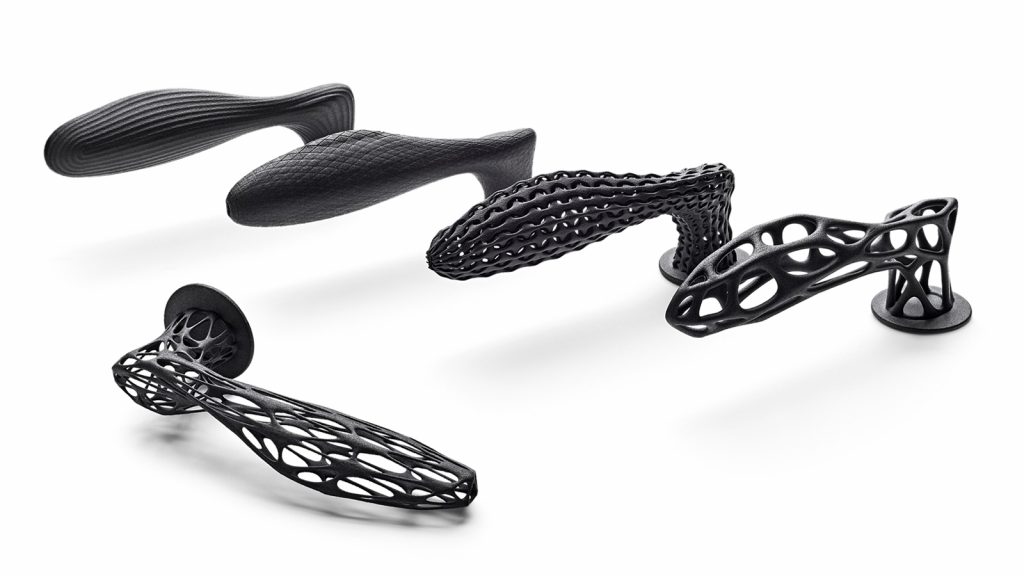With 3D printing moving towards broader adoption many companies are now entering our market. One of these is Deloitte. The professional services firm that does everything from accounting to tax and M&A also wants to guide firms into the 3D printing world. We interviewed Vinod Devan, Product Strategy and Operations Lead at Deloitte Consulting to see what the firm’s plans are in 3D printing and how it hopes to help customers.

Why is Deloitte entering the 3D printing market?
Additive manufacturing (AM) is a critical component of the Industry 4.0 digital transformation.AM technology is finally at the point where companies are starting to realize significant, tangible, new value for themselves and their customers. Deloitte is making significant investments in 3D printing knowledge and capabilities so that we can advise and join with our clients as they revolutionize supply chains, product portfolios, and business models.
What competencies does the team have?
At Deloitte, we have incredible depth in supply chain and manufacturing and have been helping companies digitize their operations.This includes product design and development, manufacturing, production design, and in-market management – all of which are impacted by AM. Through our growing ecosystem of collaborators and global alliances with leading hardware and software players in this space, we bring a holistic view of the benefits and impacts of AM and complementary digital technologies.
What kind of projects have you done with customers?
Our projects generally fall into three buckets: Helping clients who are new to additive manufacturing enter the space in a strategic manner, helping clients operationalize and scale their existing – but relatively foundational – AM efforts, and helping clients that are already mature in AM transform and optimize end to end product and supply chain operations. Regardless of the project type, we strive to strike a balance between technical feasibility, business viability, and customer desirability. This approach is necessary for a ‘play to win’ strategy in AM.
What advice could you give me if I was a large manufacturing company and I’d want to get started with 3D printing?
Start small and focus on high value areas – this could be rapid prototyping, production of spare parts, or tooling components.Use this exercise to get comfortable with the technology, economics, and value of 3D printing. Build a roadmap to demonstrate success, and keep expanding the AM applications portfolio within your enterprise. Don’t treat AM as a fad; it will change manufacturing in unprecedented ways.

What application areas do you see opening up?
Over the next three to five years, we expect growth and scale in applications that are gaining significant traction today – long tail spare parts, tooling, bridge production, product personalization, and mass customization.
What are the next products that will be industrialized with 3D printing?
Automotive and large manufacturing companies are leading the industrialization of AM, due to the significant cost savings associated with digitizing their inventory. Consumer products and med tech companies benefit from the high degree of cost-effective personalization that AM offers. The range of products that will be additively manufactured will depend on the rate of development of specialized materials, adoption of the digital thread, integration of digital security to protect IP, certification of AM products by regulatory agencies, and perhaps most importantly, the willingness of innovative executives who choose to be bullish on digitizing their businesses.
What are some of the technologies that you’re most interested in?
The ability to 3D print has been around for a long time. While recent developments in AM are certainly encouraging and exciting, the development of complementary technologies that accelerate and expand the value of AM are very interesting. These include IoT, data analytics, and AR/VR. Together with AM, these technologies unlock the true potential of Industry 4.0.
What are some key developments in 3D printing materials?
Materials are definitely on the critical path for large-scale adoption of additive manufacturing. Getting AM products to be the same or better than those produced by legacy manufacturing processes often comes down to material science and engineering. Given the unique requirements for each application, we are seeing material producers develop new strategies and even new business ventures to not just develop specialty materials, but also to provide supplemental services that accelerate the adoption of their materials.

What are the key stumbling blocks in 3D printing implementations?
There are two primary stumbling blocks – the first is companies that don’t believe that AM is finally here, not just hype. Current manufacturing processes have been around for a lot longer than AM and have reached a high degree of efficiency and optimization. AM has been touted as disrupting those legacy models for almost three decades, but has fallen short until very recently. There is an entrenched mindset that will require a cultural shift to facilitate adoption. The second stumbling block is the lack of a holistic approach to AM. There is a tendency by executives and engineers to focus on either cost or quality or some other standalone benefit. That results in a narrow adoption strategy, which often does not yield sufficient value to justify additional investment.
A lot of people can never tell me how much a 3D printed part costs. How much would a 3D Printed pen cost? How many could I make a day?
Cost and volume questions are valid, but the answers vary greatly by technology, material, and process. And in our opinion, they do not provide sufficient information when evaluating 3D printing. Along with the cost elements (once to determine how you intend to print a part), other important questions should be considered. For example, could a 3D printed pen function BETTER than a traditional pen? Could it be lighter weight? Could it be personalized to the user? Could you sell more of a 3D printed pen relative to a regular pen because of its added value? Would the lifecycle cost – not just a production cost – of the pen be lower?
What products would make sense for 3D printing, which would not?
Despite the advancements in recent years, some limitations remain. For example, products or parts that exceed the optimal build size of current machines can’t be printed. Products in sectors with heavy regulatory oversight and lengthy certification processes make the scaled adoption of 3D printing a cumbersome exercise. Products that cannot be accommodated by today’s material set require additional design cycles to determine feasibility. Like with any disruptive technology, the number of products that can be “onboarded” to AM will increase exponentially as demand increases.
Subscribe to Our Email Newsletter
Stay up-to-date on all the latest news from the 3D printing industry and receive information and offers from third party vendors.
You May Also Like
Changing the Landscape: 1Print Co-Founder Adam Friedman on His Unique Approach to 3D Printed Construction
Additive construction (AC) is much more versatile than it seems, at first: as natural as it is to focus on the exciting prospect of automated home construction, there’s far more...
US Army Corps of Engineers’ Megan Kreiger on the State of Construction 3D Printing
Despite last year’s gloomy reports about the financial state of the additive manufacturing (AM) industry, there’s no doubt that we’re actually witnessing the birth of a sector rather than its...
3D Printing Webinar and Event Roundup: April 21, 2024
It’s another busy week of webinars and events, starting with Hannover Messe in Germany and continuing with Metalcasting Congress, Chinaplas, TechBlick’s Innovation Festival, and more. Stratasys continues its advanced training...
Profiling a Construction 3D Printing Pioneer: US Army Corps of Engineers’ Megan Kreiger
The world of construction 3D printing is still so new that the true experts can probably be counted on two hands. Among them is Megan Kreiger, Portfolio Manager of Additive...





























